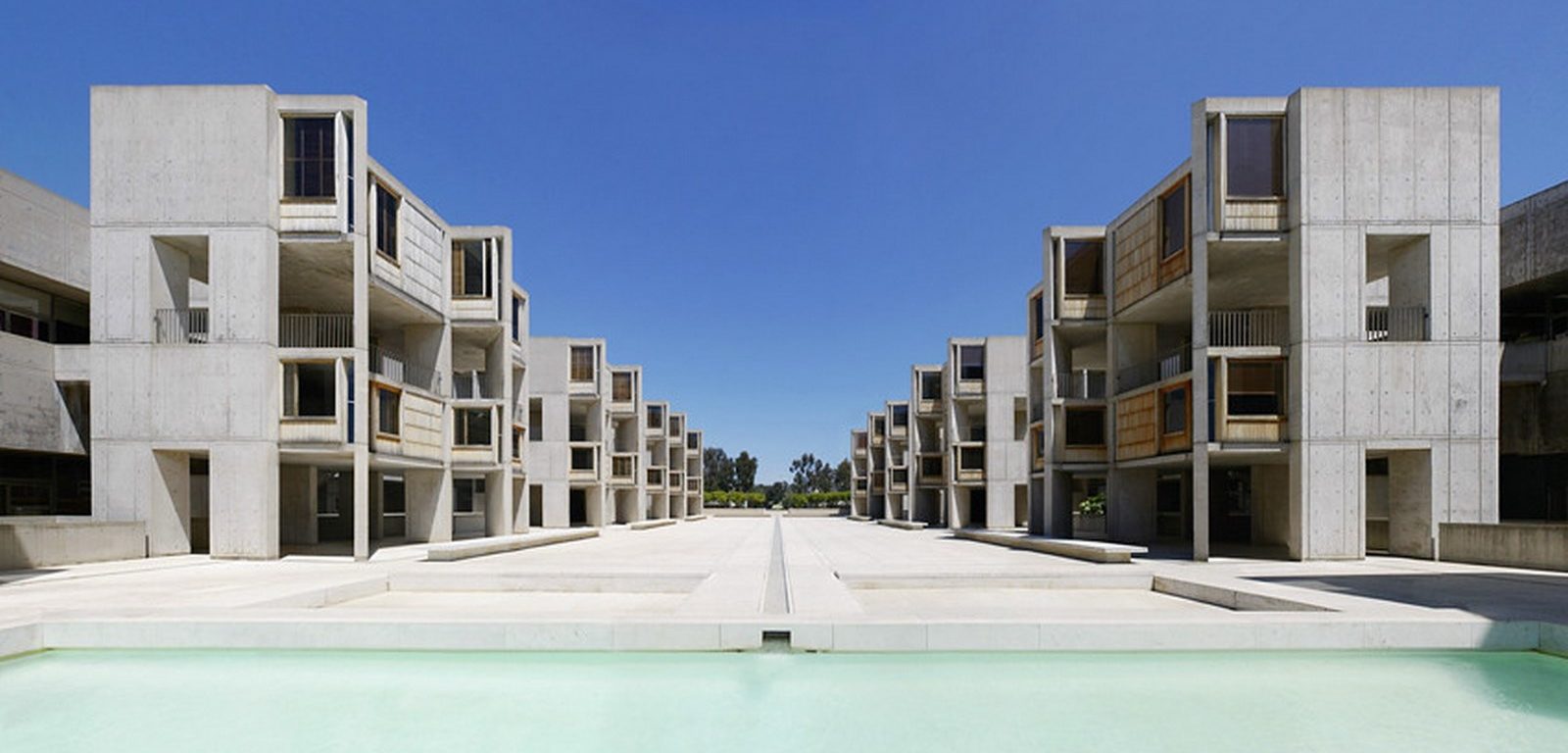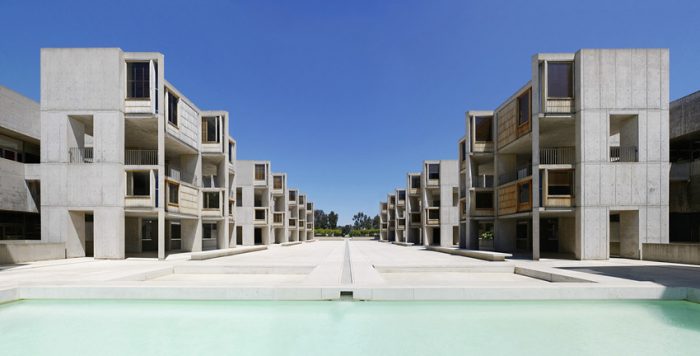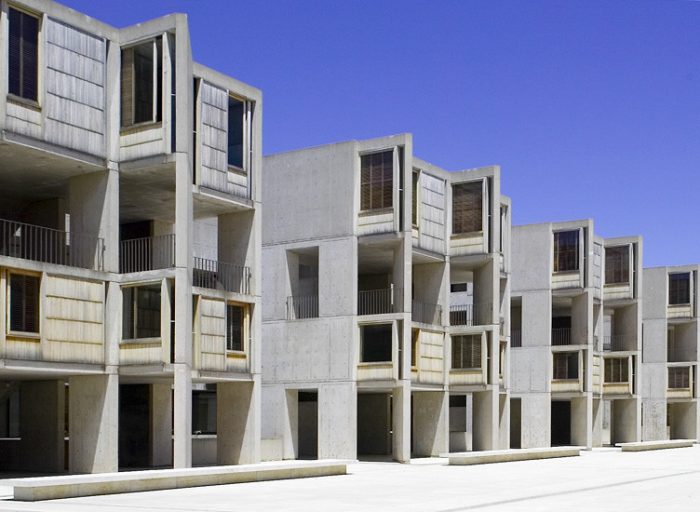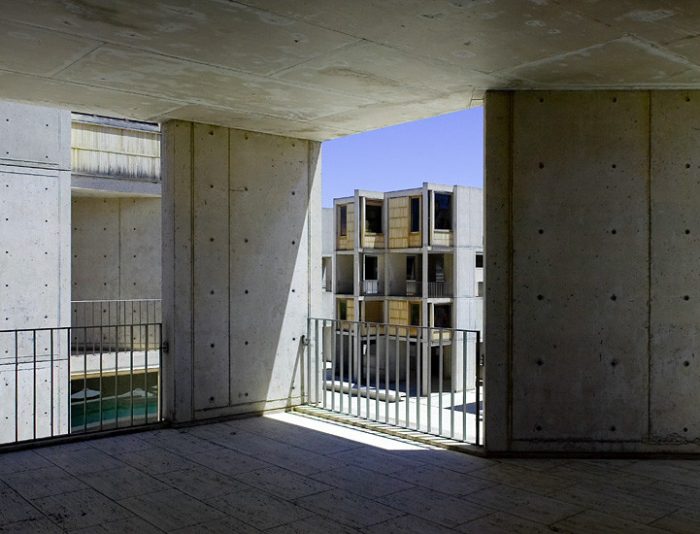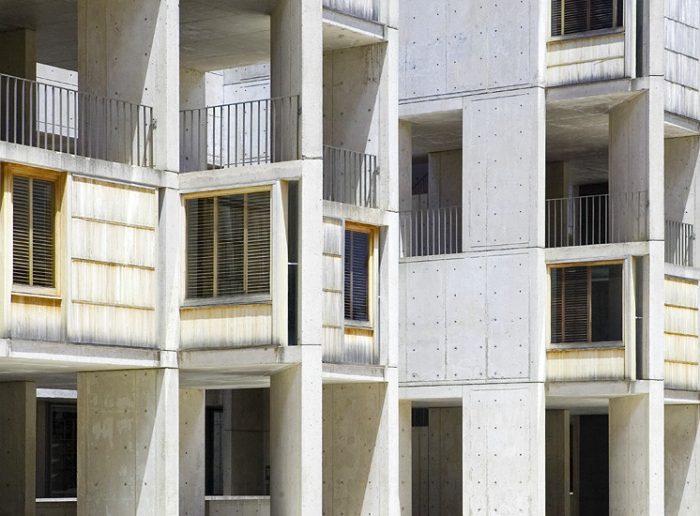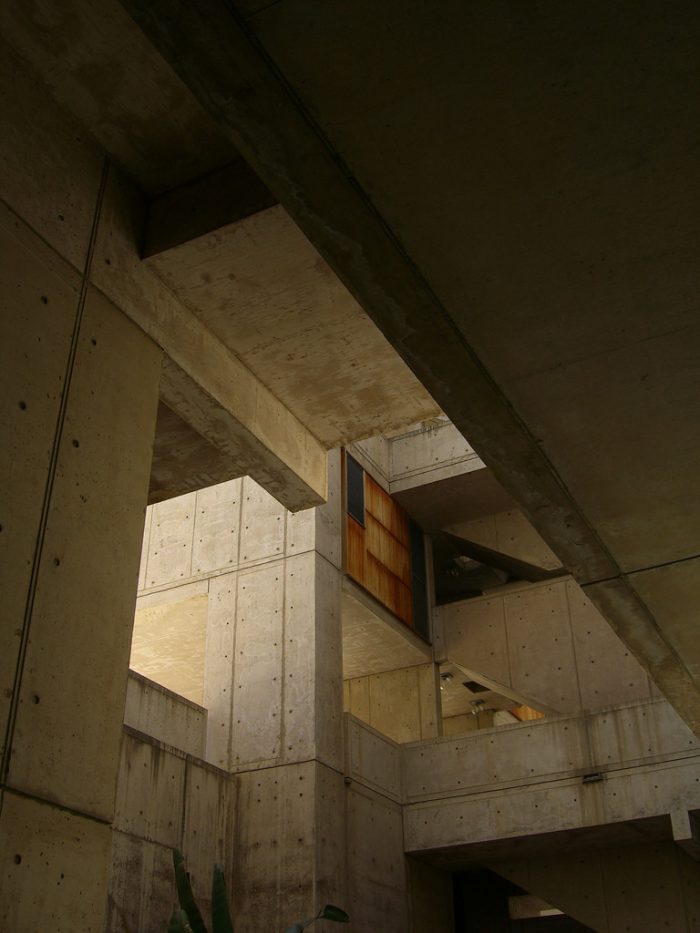1959年,发现小儿麻痹症疫苗的乔纳斯-索尔克向路易斯-I-卡恩提出了一个项目。加利福尼亚州圣迭戈市赠送给他一块位于太平洋沿岸拉霍亚的风景如画的土地,索尔克打算在那里创办并建立一个生物研究中心。索尔克的疫苗已经对疾病的预防产生了深远的影响,他坚定地认为,这个新设施的设计应该探索科学对人类的意义。他对他所选择的建筑师也有一个更广泛、甚至更深刻的指示:”创造一个值得毕加索参观的设施”。结果就是索尔克研究所,这个设施因其功能性和引人注目的美学而受到赞誉 — — 以及两者相互支持的方式。
In 1959, Jonas Salk, the man who had discovered the vaccine for polio, approached Louis I. Kahn with a project. The city of San Diego, California had gifted him with a picturesque site in La Jolla along the Pacific coast, where Salk intended to found and build a biological research center. Salk, whose vaccine had already had a profound impact on the prevention of the disease, was adamant that the design for this new facility should explore the implications of the sciences for humanity. He also had a broader, if no less profound, directive for his chosen architect: to “create a facility worthy of a visit by Picasso.” The result was the Salk Institute, a facility lauded for both its functionality and its striking aesthetics – and the manner in which each supports the other.[1,2]
除了这些高大上的指示,索尔克还提出了一系列更实际的要求。新设施中的实验室空间必须是开放的、宽敞的,并且随着新发现和新技术的发展,容易更新。整个结构要简单、耐用,需要最少的维护。同时,它要明亮、温馨–为在那里工作的研究人员提供一个鼓舞人心的环境。
卡恩对研究所的计划是以类似于修道院的方式进行空间安排的:一个隐蔽的知识分子社区。三个区域是独立的,都面向西边的大海:会议中心、村庄和实验室。会议室是一个大型社区和会议场所,而村庄则是提供生活区;建筑群的每个部分都将由一个水花园与平行的邻居分开。最终,会议中心和村子被从项目中删去,只建了实验室[4]。
Along with these lofty instructions, Salk laid down a series of more practical requirements. Laboratory spaces in the new facility would have to be open, spacious, and easily updated as new discoveries and technologies advanced the course of scientific research. The entire structure was to be simple and durable, requiring minimal maintenance. At the same time, it was to be bright and welcoming – an inspiring environment for the researchers who would work there.[3] Kahn’s scheme for the Institute is spatially orchestrated in a similar way to a monastery: a secluded intellectual community. Three zones were to stand apart, all facing the ocean to the west: the Meeting House, the Village, and the laboratories. The Meeting House was to be a large community and conference venue, while the Village was to have provided living quarters; each part of the complex would then have been separated from its parallel neighbors by a water garden. Ultimately, the Meeting House and Village were cut from the project, and only the laboratories were built.[4]
索尔克研究所的实验室,最初被设想为一对塔楼,由花园隔开,后来演变成两个拉长的街区,在铺设的广场上相互映衬。中央庭院两旁是一系列独立的塔楼,这些塔楼的对角线突出部分允许窗户朝向西面的海洋。这些塔楼通过小桥连接到长方形的实验室大楼,为两个下沉式庭院的裂缝提供通道,使自然光能够渗透到下面的研究空间。卡恩不仅将这些庭院作为采光井,而且还参考了圣弗朗西斯修道院的回廊–萨尔克曾对这个例子表示钦佩。
卡恩在索尔克研究所实施的许多设计决定都来自于他在宾夕法尼亚大学理查兹医学研究实验室工作期间的经验教训。理查兹实验室的拥挤问题导致了索尔克研究所更加开放、无障碍的布局。也是在宾夕法尼亚州,卡恩首次提出了将研究空间与公用设施基础设施分离在不同楼层的概念,这一创新将在他后来的项目中得到更全面的应用。实验室和基础设施层的交替使用,使得建筑的维护工作可以在不影响上面或下面进行的研究的情况下进行[7]。
The laboratories of the Salk Institute, first conceived as a pair of towers separated by a garden, evolved into two elongated blocks mirroring each other across a paved plaza. The central court is lined by a series of detached towers whose diagonal protrusions allow for windows facing westward onto the ocean. These towers are connected to the rectangular laboratory blocks by small bridges, providing passage across the rifts of the two sunken courts which allow natural light to permeate into the research spaces below. Kahn included these courts not only as light wells, but as references to the cloisters of the monastery of St. Francis of Assisi – an example for which Salk had previously expressed his admiration.[5,6] Many of the design decisions Kahn implemented in the Salk Institute derived from lessons learned during his work on the Richards Medical Research Laboratories at the University of Pennsylvania. Issues with crowding at the Richards Laboratories led to the more open, unobstructed layout at Salk. It was also in Pennsylvania that Kahn first developed the notion of separating research spaces from utilities infrastructure on different floors, an innovation which would be applied more comprehensively in his later project. The alternation of laboratory and infrastructural levels allows for building maintenance to occur without disrupting the research taking place above or below.[7]
根据Salk的指示,Kahn还将实验室设计成易于升级的样子。支撑梁被限制在每个实验室的边缘,这样可以更灵活地重新配置里面的设备和空间。机械系统并没有被密封在混凝土后面,而是在砖墙后面,在维护和改造时可以移开。实验室的窗户由螺丝固定,允许它们被暂时拆除,这样大型设备就可以在不需要拆除任何结构的情况下搬进搬出建筑。”这栋建筑能够 “猜测明天”,Salk在1967年提出。
根据设计,实验室是共享企业和自发合作的空间;那些寻求隐私的人必须穿过桥梁,进入中央广场上的十座塔楼之一。塔楼内有小型研究室,其西面的窗户可以看到广场和远处的太平洋。 实验室两翼的西端也是办公空间,结果是办公室和研究室都可以看到大海。
Per Salk’s instructions, Kahn also designed the laboratories to be easily upgraded. Support beams are restricted to the edges of each lab, allowing for greater flexibility in reconfiguring the equipment and spaces within. Mechanical systems are not sealed away behind concrete, but behind block walls which can be moved out of the way during maintenance and renovations. Laboratory windows are held in place by screws, allowing them to be temporarily removed so that large equipment can be moved in and out of the building without requiring any of the structure to be demolished.The building is able to “guess tomorrow,” Salk suggested in 1967.[8] The laboratories are, by design, spaces of shared enterprise and spontaneous collaboration; those seeking privacy must cross the bridges into one of the ten towers which line the central square. The towers contain small studies, with their west-facing windows directing views toward the square and the Pacific Ocean beyond.[9] The western ends of both laboratory wings are also devoted to office space, the result being that both the offices and studies are afforded views of the sea.[10]

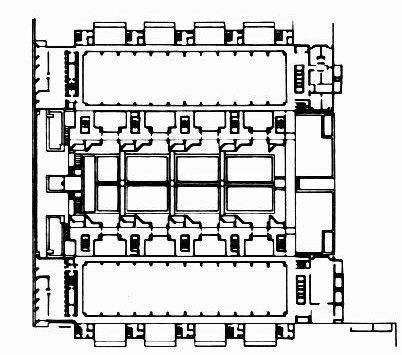

在节奏感十足的书房塔楼之间,是一片几乎毫无特色的灰白色石灰岩。卡恩最初计划在这里建一个花园,但建筑师路易斯-巴拉甘说服他把这个空间留作空旷的地方,[11]一条细细的水道把广场一分为二,把人们的目光引向蓝色的地平线。构成研究所墙壁的未完成的混凝土与广场上的石灰石颜色几乎相同,使空间具有原始而近乎崇高的纪念性,在没有直接风格参照的情况下,暗示了古罗马的前身。然而,卡恩对波状混凝土的规范暗示了这种比较–与罗马建筑中使用的类型相同)。嵌入的柚木镶板确定了书房和办公室窗户的位置,从整个研究所使用的整体混凝土和石头中提供了唯一的材料浮雕[12]。
自1965年索尔克研究所开业以来的50年里,卡恩的杰作的外观基本没有改变。混凝土和石头几乎完全经受住了海边的风吹雨打,而盖蒂基金会最近的一次保护工作则试图修复柚木板,同时保留70%的原始材料。索尔克和卡恩在实验室设计上的远见卓识,也使研究所得以保持先进研究的功能,自成立以来,已有六位诺贝尔奖获得者在这里工作。凭借其灵活的设计和材料与空间的巧妙交融,索尔克研究所很可能在未来很长一段时间内都会保持其作为研究中心和建筑奇迹的意义[13]。
Between the rhythmically-spaced study towers is a nearly featureless expanse of off-white travertine stone. Kahn initially planned to fill the space with a garden, but was convinced by architect Luis Barragán to leave the space as a void.[11] A thin channel of water bisects the plaza, drawing one’s eye toward the blue horizon. The unfinished concrete which forms the walls of the Institute is nearly identical in color to the travertine in the square, lending the space a primitive and almost sublime monumentality that hints at ancient Roman forebears without direct stylistic reference. (The comparison is suggested, however, by Kahn’s specification of pozzolanic concrete – the same type used in Roman construction.) Inset teak paneling identifies the locations of study and office windows, providing the only material relief from the monolithic concrete and stone used throughout the Institute.[12] In the five decades that have passed since the Salk Institute opened its doors in 1965, the external appearance of Kahn’s masterwork remains largely unaltered. The concrete and stone have withstood the seaside elements almost entirely unscathed, while a recent preservation effort by the Getty Foundation sought to repair the teak paneling while preserving 70% of the original material. Salk and Kahn’s foresight in the design of the laboratories has also allowed the Institute to remain a functioning facility for advanced research, one which has played host to half a dozen Nobel laureates since its founding. With its flexible design and masterful interplay of material and space, the Salk Institute is likely to retain its significance as both a research center and an architectural wonder far into the future.[13]
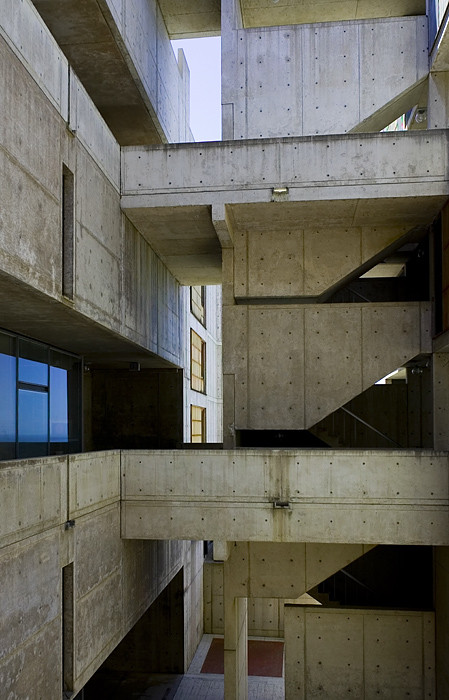
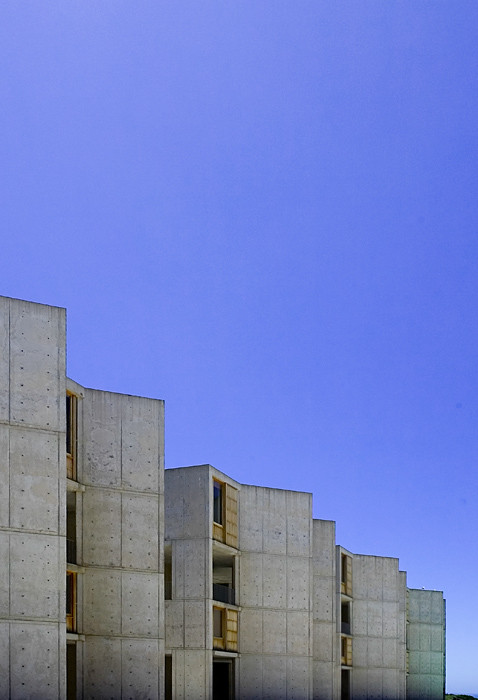


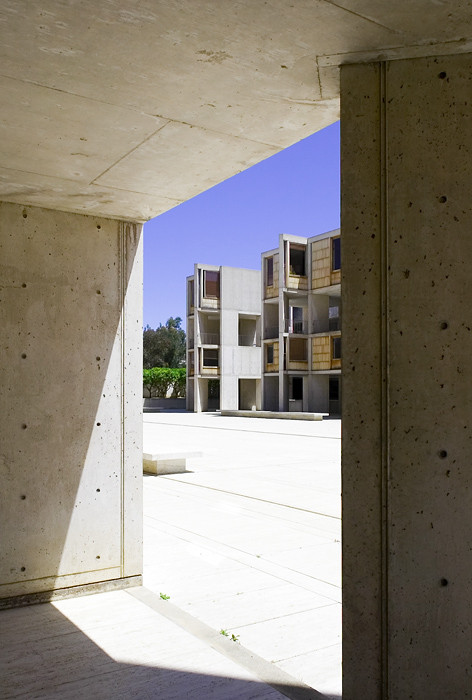
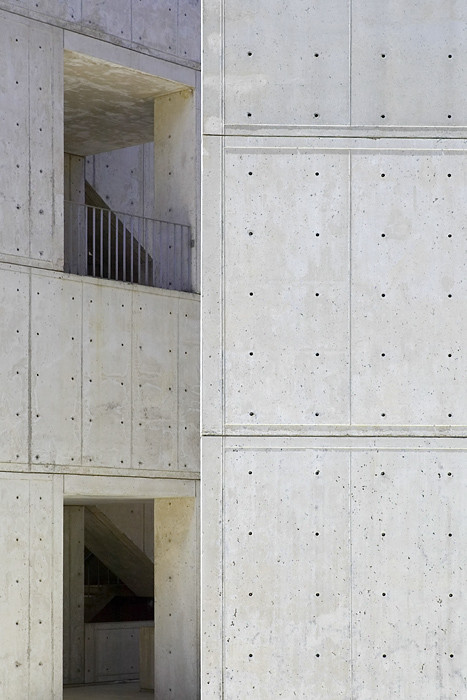

建筑师:Louis Kahn
年份:1965年
摄影作品:Liao Yusheng
城市: 圣地亚哥
国家:美国 美国
Architects: Louis Kahn
Year: 1965
Photographs: Liao Yusheng
City: SAN DIEGO
Country: UNITED STATES

